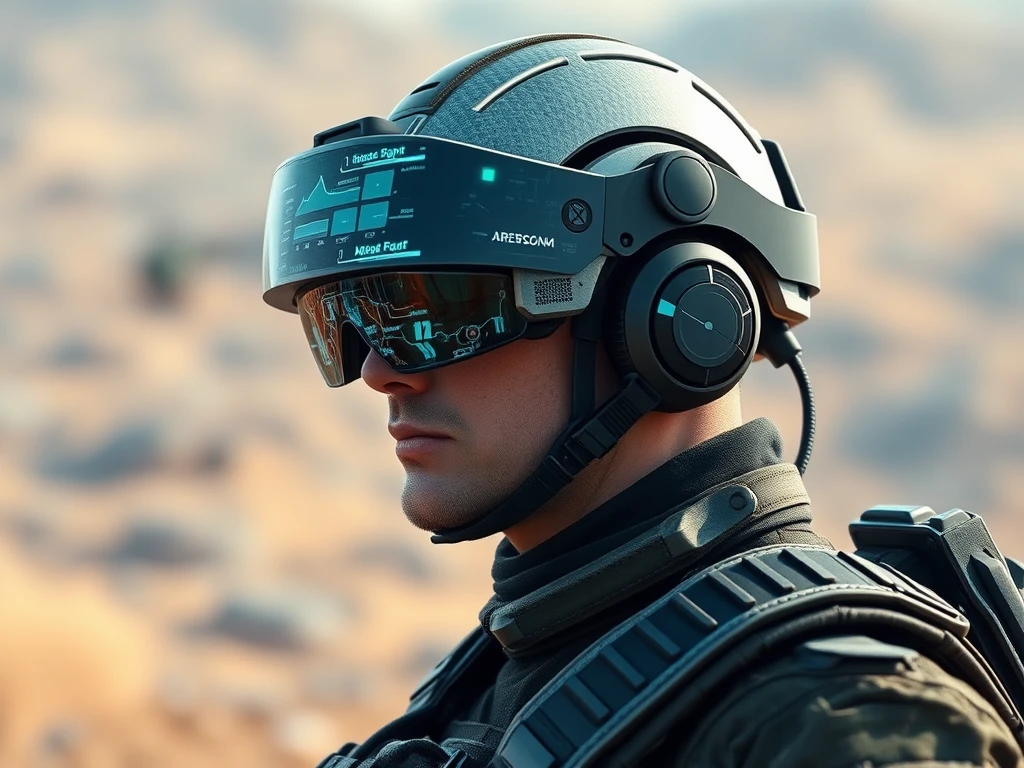BREAKING: Meta’s AI Military Headset Project EagleEye Revealed

In a move that bridges consumer technology development with defense applications, Meta Platforms, the company heavily invested in the metaverse and exploring digital asset integrations, is now set to build AI-powered mixed-reality headsets for the US military. This development highlights how technology initially aimed at commercial markets is finding its way into national security, a trend of increasing interest across the tech landscape.
The Anduril Meta Partnership Takes Flight
The collaboration sees Meta joining forces with defense contractor Anduril Industries. Anduril co-founder Palmer Luckey, who also co-founded Oculus VR (acquired by Meta in 2014), announced this partnership. He stated that the first publicly revealed project is codenamed “EagleEye.” This initiative is part of a broader effort to equip US soldiers with advanced technological capabilities, aiming to turn them into what Luckey terms “technomancers.” The Anduril Meta partnership leverages components and technology originally built for commercial use, repurposing them for military applications.
Leveraging AI Military Tech for Enhanced Operations
The planned headsets will integrate Anduril’s Lattice platform, an AI-powered command and control system. This platform is designed to process data from numerous sources, providing real-time battlefield intelligence directly to the soldier. This use of AI military tech is intended to give soldiers:
- Enhanced perception of their surroundings.
- Intuitive control over autonomous systems.
- Improved tactical decision-making in combat scenarios.
Anduril emphasized that this integration will transform how warfighters interact with battlefield information, offering immersive technology solutions.
Mixed Reality Defense and the EagleEye Headset
The core technology involves Mixed reality defense applications, combining elements of both virtual and augmented reality. The EagleEye headset is envisioned as a potential successor for soldier-borne mission command systems. Funding for this project comes from private capital, demonstrating a model where private investment drives defense technology development by adapting existing commercial tech. Meta’s significant investment in VR and AR technology since pivoting towards the metaverse in 2021 is now yielding potential applications far beyond consumer entertainment or social interaction.
Big Tech’s Deepening Ties with Defense
This Meta-Anduril collaboration is part of a larger pattern of US tech giants increasing their work with the military and defense sectors. Previously, Microsoft was contracted to develop AR headsets for the US military based on its HoloLens technology, part of the same Soldier Borne Mission Command program. While Microsoft will continue providing cloud services, Anduril has taken the lead on the hardware development. Other recent examples include:
- Meta opening access to its Llama large language model for US military and defense contractors for national security purposes.
- AI firm Anthropic providing access to its Claude 3 and 3.5 AI models to the US defense departments via Palantir’s platform on AWS.
- Palantir partnering with Microsoft to sell AI services and analytics to US defense and intelligence agencies.
These partnerships underscore a growing convergence between leading-edge commercial technology development and national security needs.
Conclusion
Meta’s venture into building Meta military headset technology via the EagleEye project with Anduril marks a significant development. It showcases how the vast investments poured into metaverse and AR/VR technology are finding critical, real-world applications in the defense sector. This trend of tech giants leveraging their advanced AI and mixed reality capabilities for military purposes highlights the evolving relationship between Silicon Valley and the Pentagon, with implications for future technological innovation and its deployment across various domains.









